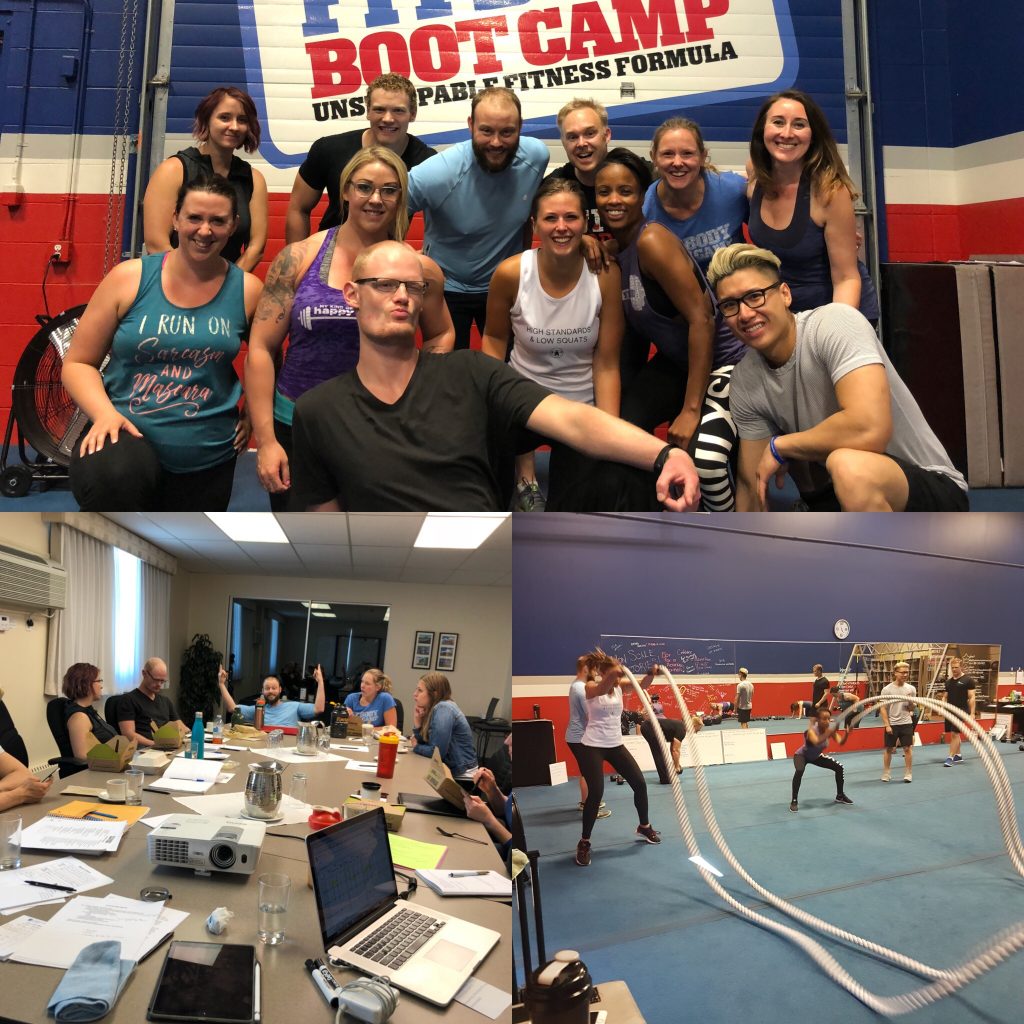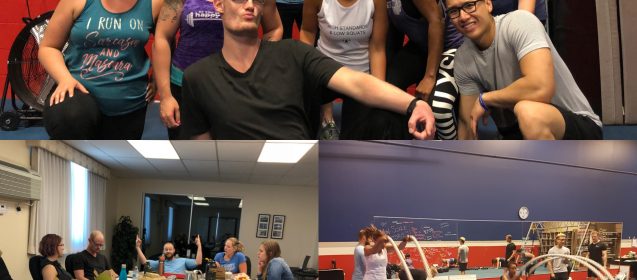
The Dream Team!
It’s humbling to say the least; but leadership has not come naturally to me.
In fact it’s awkward to vocalize it (though a kind of therapy) I never realized I was such an introverted person.
I mean I guess maybe I should have clued in as I’ve always joked, “I like my dogs better than most people.”
But all jokes aside I think you get the point, leadership has been a challenge and as such my teams have seen many plateaus in my businesses that have been hard to get through and usually resulted in some turn over.
Now that’s not to say we don’t have great teams, or that we haven’t had great success, or even that we’ve had bad company culture. None of those things are true; but what is, is that it became clear to me that management and leadership needed to improve to position our companies for next level massive growth.
So today I wanted to share with you some of my biggest breakthroughs in building a team that’s going to let you add more digits to your revenue and profits.
Rule #1: You need more applicants.
One of the biggest mistakes I’ve made repeatedly is we weren’t getting enough, reviewing enough, and interviewing enough applicants for an open position.
On average I now like to see at least 50 applicants for any position, whether that’s a trainer or an administrative role.
Many of you might be thinking; how do I even get that many applications quickly?
Well for me that’s come from three specific sources: mailing to my email list, spending money on paid posts on Facebook and paid job postings on sites like Indeed.ca/.com
All of our applicants now start their process with a group interview. That group interview begins with a workout after which they meet with my manager who asks the following questions: (If you’ve read the highly impactful book Double, Double by Cameron Herold you might recognize some of these, I you haven’t you should!)
- What are your favourite books and why?
- What is your favourite movie, and why?
- What car is most similar to you as a person, and why?
- What was the most stressful time of your life, and why?
- What was the most complex project/situation you ever led, and why?
- What stresses you out?
- Why do you want to work here?
- Who is the best candidate in the room, and why?
- If we were to hire two people, and you were one of them, who would you want us to hire to work with you?
- When could you start?
- *(Only ask this if there are not clients within ear shot, but great finishing question) How much do you need to earn per hour/annually in year one? Year three?
Our favourite time for group interviews is Friday at 5:30-7:00 PM (especially on long weekends.)
This process has saved us so much time and easily allows us to find the 3-5 top tier superstars out of the 50 applications we receive. These candidates then progress to a 90-minute second interview with me via Facebook messenger (great way to get them to add you as friends so you can see what their social feed looks like since people’s profiles are getting harder to find.)
This single adjustment completely reshaped my team in less than 60 days.
Rule #2: Foster communication, frequent communication.
I’ve been referring to it a lot lately, I guess because leadership and management has been on my mind so much.
I heard someone speak to a reference from Harvard Business School recently that went something like this, “as much as 86% of businesses that fail, fail because of poor communication, not a bad product or bad service.”
I have no idea if this is accurate but I’d be willing to bet that it is.
It’s a simple fact that any business that is actively trying to grow is going to be a bit disorganized, if you’re not you can’t be growing as fast as possible, that’s just the way it is.
When organization lacks; outcomes are dictated by the ability of the team members to make good decisions in that moment, let’s face it when chaos ensues we all default to perception and instinct and kind of make it up as we go.
Your goal is of course to ensure that the thought process that leads to those decisions is as much in line with your vision as possible. So how do you do that?
Well we’ve had massive success in just a short time using really regular employee reviews. (Weekly for the first 90 days, then monthly after that.)
(CLICK HERE to see a sample of one of our reviews)
I firmly believe in perception based questioning, so a lot of our review elements are based on 1-10 scale questions. Both the direct report and the employee will complete the review prior to the review meeting; the purpose is to clarify both performance, objectives and expectations and make sure they align with the company vision; but more importantly manufacture a frequent point of real communication so introverted people like me don’t keep putting it off.
Which leads me to rule #3…
Rule #3: Have a clear vision and values to live by.
I have to admit; over the years I’ve seen so many dusty mission and value statement signs in businesses that I began to brush their usefulness aside. Only recently I have truly begun to understand the significance and how to apply them.
What do you stand for?
Why is it important to you?
If you visualize your company in 3-5 years from today what will have happened?
I now believe this is so critical to success I urge you to stop reading and start writing right now!
Doing this kind of brainstorming activity recently lead me to shift the whole organizational structure of my companies, and the benefits it would bring became so obvious.
But describing your vision in as much detail as possible it will set your mind to begin to rationalize what does that end goal really look like?
From there you will begin to assign the concrete markers like how much revenue you will be generating, how much profit, how many employees you might need, how many customers, the impact you will have made with your product or service.
From there you can begin to work backward to where you are today, what do you need from each member of your team today to begin moving toward your vision? What are the bullet points of their day-to-day tasks? What more do you need to expect from them as you grow? Who are the new people you will need to your organization?
Soon you’ll end up as I did with a great list that will become the “job description” for each position in your organization and likely even a career roadmap for them to follow as they help you build the company illustrated in your vision.
(CLICK HERE to see our Mission, Vision, Values)
(CLICK HERE to see a sample of our Trainer Job Description and Career Path)







 YES! Contact me today to schedule a FREE no obligation consultation and trial workout.
YES! Contact me today to schedule a FREE no obligation consultation and trial workout.